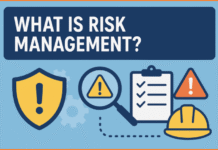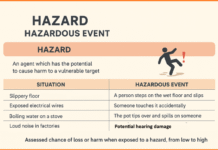There are basically two types of electric welding
- Electric Arc Welding
- Electric Resistance welding
Contents
Electric arc welding
An electric arc is formed when electric current passes from one conductor to another through an air gap and the di-electric strength of the gap is broken.arc continues to be maintained in the gap as long as the current flows producing intense heat raising the temperature to about 6500deg.c when welding is carried on between two metal pieces the heat generated melts a small pool of metal in the job. The electrode also melts and is deposited into this small pool of molten metal pool agitated and thus the base or parent metal is thoroughly mixed with melted electrode metal and is refined.
As welding progresses the metal pool cools down under a proactive cover of slag left by the electrode. On cooling a sound joint is formed between the two metal pieces.
In electric welding either direct or alternating current can be used. Of course there are limitations and one cannot be replaced by the other in all cases.
DC welding uses either a Generator or Transformer Rectifier unit to produce DC current which generally is in the range of 25 to 300amps, the voltage being 40 to 80 v.
Electric Resistance welding
The second type of electric welding is that when electricity passes through a substances that resists its flow, heat is produced. This heat may be sufficient to melt the substance (metal) and their mutual welding may be achieved.
Motor generators, rectifiers or transformers used for welding or cutting and their current carrying parts shall be protected against accidental contact with uninsulated live parts.
Before commencement of welding operation, all electrical connections shall be checked to conform that they are correctly and securely made. The ground wire shall be securely and effectively connected to work.
Pipelines containing gases or flammable liquids or conduits carrying electrical conductors shall not be used for ground return circuit.
Also read: Hazards and precautions associated with welding
Also read: SAFETY IN GAS CUTTING AND WELDING
Also read: Cause and Remedies for Backfires and Flashbacks
General safety regulations for welding
- All cables and connections should be sound and of adequate capacity and properly insulated.
- The earthing arrangements should be properly made with earthing clamps or a bolted terminal.
- In addition to the welding return cable, a welding earth must be provided on the job.
- Electric holders when not in use, should be placed on an insulated hook or the holders should be fully insulated. Live electrodes should not be left on the face shield or gloves nor left suspended by the welding cable.
- The ground return cable from welding set shall be connected to the welding job as close as possible.
- When the welder stops or leaves work for any appreciable time, the power supply to the welding machine shall be effectively disconnected.
- The welder should make sure that his clothing is free from oil or grease. He should keep his work place clean and tidy and not littered with combustible materials.
- All arc welding operations must be screened to prevent eye flash to other persons working in the vicinity. Where work is carried out on fixed benches or in welding shops, permanent screens may be erected. In all other cases, temporary portable screen should be used.





